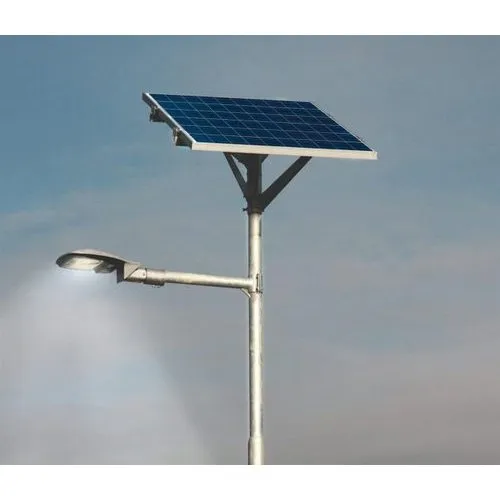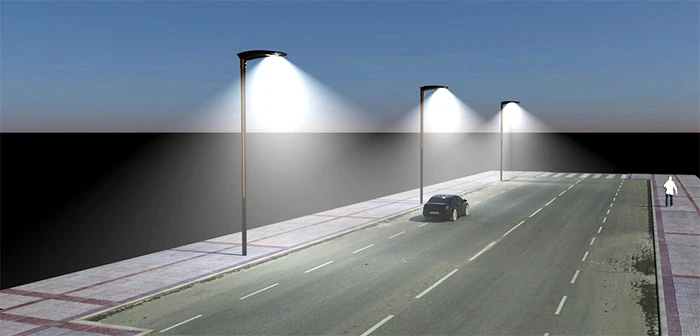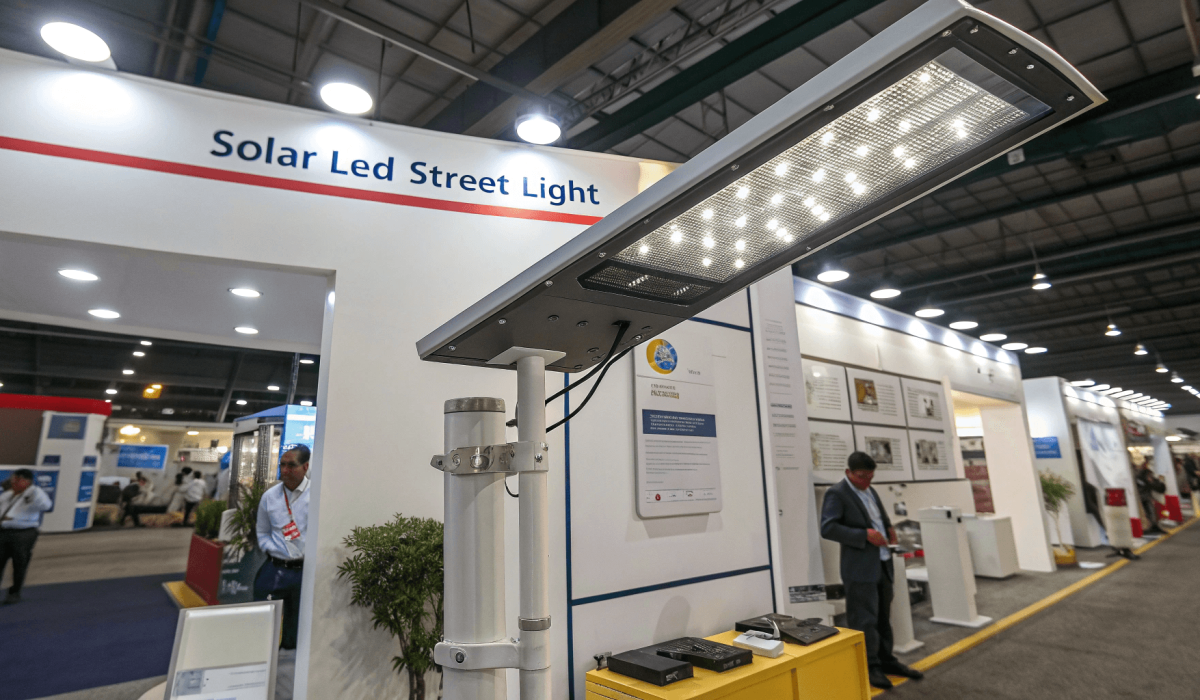The solar LED street light market is rapidly evolving, driven by advancements in technology, growing demand for energy-efficient solutions, and an increasing focus on sustainability. Understanding these market trends and technological development directions is essential for making informed purchasing decisions and staying ahead of the curve. Below is an optimized article structure to capture the key trends and future directions in the solar LED street light market, addressing both consumer and business interests.
The solar LED street light market is growing, driven by government policies, environmental concerns, and technological advancements. This article explores key market trends and technological innovations for the next few years.
1. Introduction: The Evolution of Solar LED Street Lights and Market Growth
- Overview of the rapid adoption of solar LED street lights in public infrastructure projects and their increasing presence in residential and commercial applications.
- Highlight the global market growth, driven by government policies, environmental concerns, and advancements in LED and solar technology.
Search Intent: Users are seeking a comprehensive understanding of the market's growth, key trends, and future technological advancements in solar LED street lights.
2. Current Market Trends for Solar LED Street Lights
2.1 Increased Adoption Driven by Sustainability and Cost Efficiency
- Explain how rising environmental awareness and government sustainability initiatives are driving demand for solar-powered street lighting solutions.
- Discuss the growing emphasis on energy savings and reduced carbon footprints, which make solar LED lights a preferred choice for municipalities and commercial enterprises.
Search Intent: Users are interested in understanding why solar LED street lights are becoming more popular and how sustainability is a key factor in their adoption.
2.2 Government Policies and Incentives Fueling Market Growth
- Detail the role of governmental regulations, incentives, and subsidies promoting solar lighting projects in public infrastructure.
- Mention specific initiatives, such as tax breaks, renewable energy credits, and green building certifications, which are contributing to the increasing adoption of solar LED street lights.
Search Intent: Customers are looking for insights into how government policies and financial incentives can reduce the cost of adopting solar street lighting.
2.3 Rising Demand for Smart and Connected Solar Street Lights
- Highlight the growing interest in smart solar street lights that integrate with IoT (Internet of Things) systems, offering features such as remote monitoring, automatic dimming, motion sensors, and real-time diagnostics.
- Discuss how these smart features can further reduce energy consumption and optimize maintenance schedules, providing long-term savings.
Search Intent: Users want to learn about the integration of smart technologies into solar LED street lighting and the added value these innovations bring.
3. Technological Advancements in Solar LED Street Lights
3.1 Improvements in Solar Panel Efficiency
- Discuss advancements in solar panel technology that are increasing energy conversion efficiency and reducing the size and cost of panels.
- Explore how newer solar panels are able to generate more power even in low-light conditions, making solar street lights viable in a wider range of geographical areas.
Search Intent: Users are curious about the latest developments in solar panel technology and how these innovations improve the performance of solar LED street lights.
3.2 Battery Technology Advancements for Longer Performance
- Examine the impact of new battery technologies, such as lithium-ion batteries and energy storage systems, on the performance and longevity of solar LED street lights.
- Discuss how improved battery life reduces the need for frequent replacements and enhances the reliability of solar street lights, even in areas with long or cloudy nights.
Search Intent: Consumers and businesses are looking for information on how battery advancements contribute to more reliable and cost-effective solar street lighting solutions.
3.3 Integration of Smart Controls and Automation
- Detail the ongoing development of smart control systems, including sensors for automatic brightness adjustment, cloud-based monitoring, and predictive maintenance alerts.
- Explain how these systems help optimize energy consumption, detect issues in real-time, and reduce maintenance costs.
Search Intent: Users are interested in the growing role of automation and smart control systems in enhancing the functionality of solar LED street lights.
3.4 Enhanced Durability and Weather Resistance
- Discuss improvements in the durability and weather resistance of solar LED street lights, especially in challenging environments such as extreme heat, humidity, and heavy snowfall.
- Mention advancements in materials used for housing and fixtures, which contribute to longer product lifespans and less frequent repairs.
Search Intent: Customers want to understand how advancements in materials are improving the durability and longevity of solar LED street lights in various climates.
4. Market Dynamics: Drivers and Challenges

4.1 Drivers of Market Growth
- Summarize key drivers of the solar LED street light market, including environmental concerns, technological advancements, government initiatives, and the growing need for energy-efficient infrastructure.
- Discuss the role of urbanization and infrastructure development in creating demand for modern lighting solutions.
Search Intent: Users are looking for a deeper understanding of the factors influencing the growth of the solar LED street light market and why this technology is being widely adopted.
4.2 Challenges Facing the Solar LED Street Light Market
- Address some of the challenges facing the market, such as the high initial cost of installation, limited availability of skilled installation and maintenance technicians, and concerns over battery performance in extreme weather conditions.
- Mention how these challenges are being mitigated through innovations and improvements in product design and supply chain efficiency.
Search Intent: Users are seeking insights into the challenges in the solar LED street light market and how these obstacles are being overcome through technological advancements.
5. Future Directions for the Solar LED Street Light Market
5.1 Greater Emphasis on Integrated Renewable Energy Solutions
- Discuss the future trend of combining solar LED street lighting with other renewable energy technologies, such as wind power or hybrid solutions, to ensure consistent performance in areas with less sunlight or fluctuating weather conditions.
- Highlight how these integrated systems can provide reliable, off-grid solutions for remote or underserved areas.
Search Intent: Users are looking for emerging trends in solar energy integration and how hybrid systems could expand the versatility of solar street lights.
5.2 Focus on Modular, Scalable Systems
- Explore the trend toward modular and scalable solar LED street light systems that can be easily expanded or adapted to meet changing infrastructure needs.
- Discuss how modular designs allow for flexibility in scaling projects, from small rural installations to large urban developments.
Search Intent: Users are interested in learning how modularity and scalability are shaping the future of solar LED street lighting in urban and rural settings.
5.3 Enhanced Data Collection and Analytics for Improved Efficiency
- Predict the future role of data collection and analytics in solar LED street lighting systems, allowing for better management, maintenance, and energy consumption tracking.
- Discuss how machine learning and AI could help optimize the performance of solar LED street lights by analyzing usage patterns and providing actionable insights.
Search Intent: Users are looking for the future potential of data-driven decision-making and how advanced analytics could further improve the efficiency and functionality of solar street lighting systems.
6. Conclusion: Preparing for the Future of Solar LED Street Lights

- Summarize the key trends and technological advancements discussed throughout the article, emphasizing how these factors will shape the future of the solar LED street light market.
- Encourage governments, municipalities, and businesses to consider the latest technologies and market developments when planning future solar lighting projects.
The solar LED street light market is experiencing significant growth and technological advancements. Here are the key trends and developments shaping the industry:
- Market Expansion: The global solar street lighting market was valued at USD 10.39 billion in 2024 and is projected to reach USD 12.18 billion in 2025, growing at a CAGR of 17.3%.
- Technological Integration: There is a growing trend toward integrating solar LED street lights with Internet of Things (IoT) and smart technologies, enhancing features like remote monitoring and adaptive lighting.
- Sustainability Focus: Governments and municipalities are increasingly adopting solar LED street lights to meet sustainability goals, reduce carbon footprints, and lower energy costs.
- Product Innovation: Companies are developing new solar-powered streetlight products to gain a competitive edge in the market, such as AGC Inc.'s ST57 solar LED streetlight launched in May 2023.
- Off-Grid Solutions: The installation of off-grid solar streetlights is expanding, particularly in rural and underserved areas, to provide reliable lighting without the need for extensive infrastructure.
- Regional Growth: The Asia-Pacific region was the largest market for solar street lighting in 2024, driven by urbanization and government initiatives promoting renewable energy.
- Cost Reduction: Advancements in solar panel and battery technologies are leading to reduced costs for solar LED street lights, making them more accessible for various applications.
- Smart City Initiatives: Solar LED street lights are being integrated into smart city projects, offering benefits like energy efficiency, improved public safety, and data collection capabilities.
- Government Incentives: Many governments are providing incentives and subsidies to encourage the adoption of solar LED street lighting, supporting the transition to renewable energy sources.
- Long-Term Projections: The solar street lighting market is expected to continue its growth trajectory, with projections estimating the market to reach USD 23.59 billion by 2033, growing at a CAGR of 17.12% from 2025 to 2033.


